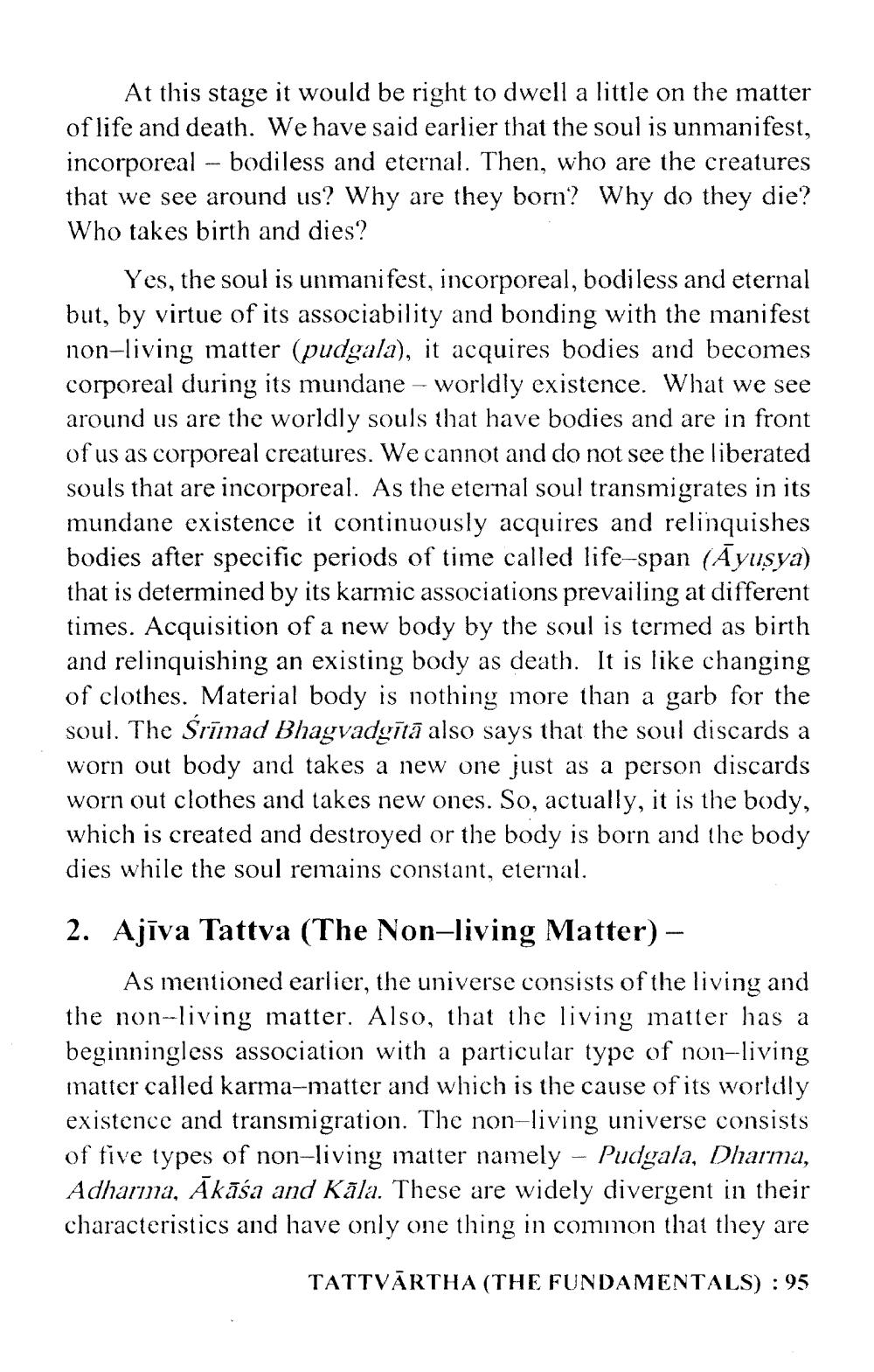________________
At this stage it would be right to dwell a little on the matter of life and death. We have said earlier that the soul is unmanifest, incorporeal - bodiless and eternal. Then, who are the creatures that we see around us? Why are they born? Why do they die? Who takes birth and dies?
Yes, the soul is unmanifest, incorporeal, bodiless and eternal but, by virtue of its associability and bonding with the manifest non-living matter (pudgala), it acquires bodies and becomes corporeal during its mundane - worldly existence. What we see around us are the worldly souls that have bodies and are in front of us as corporeal creatures. We cannot and do not see the liberated souls that are incorporeal. As the eternal soul transmigrates in its mundane existence it continuously acquires and relinquishes bodies after specific periods of time called life-span (Ayusya) that is determined by its karmic associations prevailing at different times. Acquisition of a new body by the soul is termed as birth and relinquishing an existing body as death. It is like changing of clothes. Material body is nothing more than a garb for the soul. The Srimad Bhagvadgītā also says that the soul discards a worn out body and takes a new one just as a person discards worn out clothes and takes new ones. So, actually, it is the body, which is created and destroyed or the body is born and the body dies while the soul remains constant, eternal.
2. Ajīva Tattva (The Non-living Matter) -
As mentioned earlier, the universe consists of the living and the non-living matter. Also, that the living matter has a beginningless association with a particular type of non-living matter called karma-matter and which is the cause of its worldly existence and transmigration. The non-living universe consists of five types of non-living matter namely - Pudgala, Dharma, Adharma, Akāśa and Kāla. These are widely divergent in their characteristics and have only one thing in common that they are
TATTVĀRTHA (THE FUNDAMENTALS) : 95




